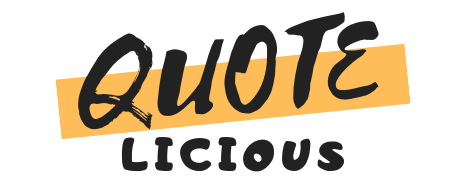Make Random Decisions Quickly and Easily With These Tips
In the fast-paced world we live in, the ability to make random decisions quickly and effortlessly is a valuable skill. Whether you’re choosing what to have for lunch, which movie to watch, or determining the order of tasks on your to-do list, being able to make swift decisions can enhance productivity and reduce stress.
Fortunately, there are several strategies and tools available to help streamline the decision-making process.
In this article, we’ll explore some practical tips and techniques for making random decisions with ease.
Embracing Spontaneity
Life is filled with unexpected twists and turns, and sometimes the best decisions are made on a whim. Embracing spontaneity can add a sense of excitement to your choices.
Rather than overthinking every decision, consider trusting your instincts and going with the flow. This doesn’t mean abandoning careful consideration altogether, but rather acknowledging that sometimes the most delightful outcomes arise from unplanned decisions.
For instance, when faced with multiple options for a weekend getaway, instead of meticulously planning every detail, try closing your eyes and pointing to a destination on a map. Spontaneous decisions like these can lead to unique experiences and memories that a meticulously planned trip might miss.
Utilizing Decision-Making Frameworks
Decision-making frameworks provide structured approaches to choices, making them especially useful when randomness is desired. One popular framework is the “pros and cons” list. When faced with a decision, list the positive and negative aspects of each option.
Assign weights to each factor based on its importance, and tally up the scores. This method brings a sense of objectivity to the decision-making process, helping you see the options from a clearer perspective.
For example, if you’re deciding between two job offers, create a pros and cons list for each, considering factors such as salary, job responsibilities, and company culture. This structured approach not only facilitates quick decision-making but also ensures that you consider all relevant aspects.
The Power of Intuition
Intuition, often referred to as a “gut feeling,” can be a powerful guide in decision-making. While it might seem subjective, intuition is the result of your brain processing vast amounts of information quickly, often on a subconscious level.
To tap into your intuition, give yourself the mental space to reflect and listen to your inner thoughts and feelings.
In scenarios where time is of the essence, trusting your intuition can be a game-changer. For instance, when choosing between two equally appealing options on a restaurant menu, allow your intuition to guide you. It may lead you to a dish that unexpectedly becomes your new favorite.
The Role of Yes-or-No Generators
Yes-or-no generators, whether digital or analog, offer a straightforward and impartial approach to random decision-making. These yes or no tools range from coin flips to online generators that provide a binary choice.
While simple, they can be remarkably effective, especially when you find yourself torn between two options with seemingly equal appeal.
Consider a scenario where you’re struggling to decide between two workout routines. Assign one routine to “heads” and the other to “tails” and flip a coin. The outcome may not determine the superior choice, but it can alleviate the burden of making a decision and propel you into action.
Harnessing Number Generators for Randomness
Number generators provide a numerical spin to decision-making, introducing an element of unpredictability. For example, if you’re undecided on which book to read next from a list of five, use a random number generator to choose. The selected number corresponds to the book on your list, eliminating the need for prolonged deliberation.
In situations where the stakes are low, such as selecting a movie from a streaming service, using a number generator adds an element of surprise to your decision. It also prevents decision fatigue, which can result from an abundance of choices.
Creating Decision-Making Rituals
Rituals can be a fun and lighthearted way to introduce randomness into decision-making. Establishing a unique routine for certain choices adds an element of playfulness to the process. This can be as simple as spinning a wheel with different options or drawing straws for a selection.
Imagine having a weekly movie night where you and your friends take turns spinning a wheel to choose the film. This ritual not only makes the decision-making process enjoyable but also fosters a sense of shared decision-making, enhancing the overall experience.
Embracing Imperfect Choices
In the quest for quick decisions, it’s essential to embrace the idea that not every choice needs to be perfect. Sometimes, the pursuit of perfection can lead to analysis paralysis, hindering the decision-making process. Accepting that decisions may not always yield optimal outcomes allows for more flexibility and adaptability.
For example, if you’re selecting a restaurant for a spontaneous dinner with friends, trust that any choice made in the moment will likely lead to an enjoyable experience. The goal is not perfection but rather the joy of making a decision and moving forward.

In a world filled with choices, the ability to make random decisions quickly and easily is a valuable skill. Whether you choose to embrace spontaneity, utilize decision-making frameworks, trust your intuition, or employ tools like yes-or-no generators and number generators, the key is to find a method that aligns with your preferences and the context of the decision.
By acknowledging the power of randomness and incorporating it into your decision-making process, you can navigate the complexities of life with greater ease and enjoy the surprises that come with embracing the unknown. Remember, it’s not always about making the perfect choice but about making choices that propel you forward.
Navigating the labyrinth of life’s decisions requires a blend of strategy and spontaneity. As you experiment with different methods and tools to enhance your random decision-making skills, it’s crucial to remain adaptable. Recognize that the effectiveness of a particular approach may vary depending on the nature of the decision and your personal preferences.
Flexibility in your decision-making toolkit ensures that you can seamlessly switch between structured methods, like decision-making frameworks, and more whimsical approaches, such as embracing spontaneity or using randomizers.
The art of making random decisions isn’t about adhering to a rigid formula but about cultivating a dynamic mindset that allows you to respond to the nuances of each situation.
In the end, the journey of mastering the skill of quick and easy decision-making is as important as the choices you make along the way. Embrace the adventure, relish the unexpected, and savor the freedom that comes with confidently navigating life’s myriad choices.







